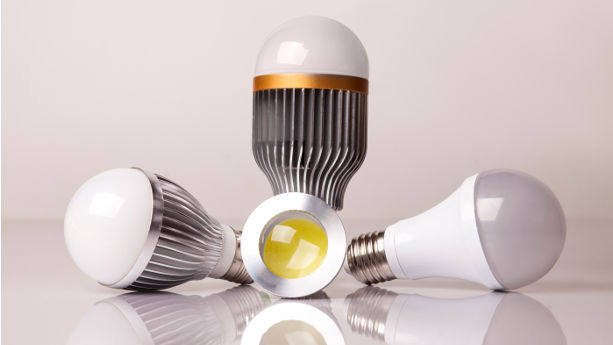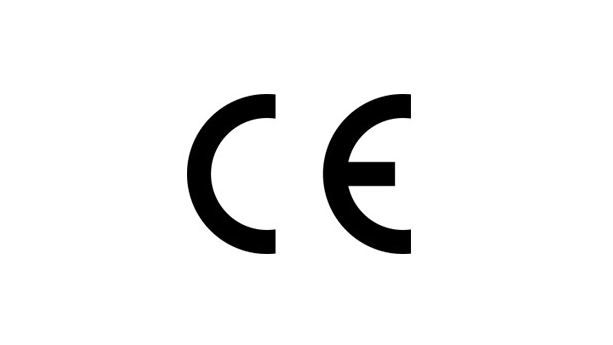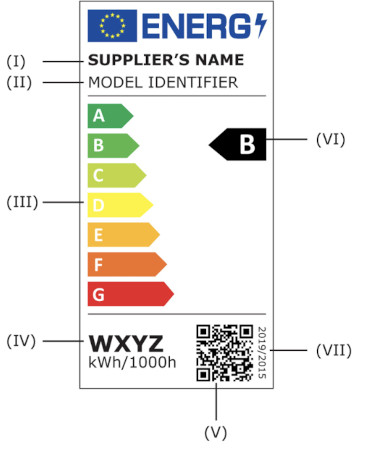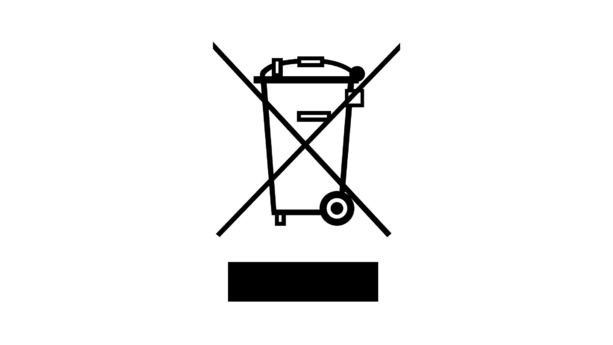
Companies importing and manufacturing LED lighting products for the EU market must ensure compliance with various regulations and directives. These, in turn, set requirements concerning electrical safety, energy efficiency, labelling, documentation, and lab testing.
This guide explains how different directives and regulations are relevant to LED lighting products, including the Low Voltage Directive, Ecodesign Directive, the Energy Labelling Framework Regulation, and the RoHS Directive.
Content Overview

FREE CONSULTATION CALL (US, EU & UK)
- Request a free 30-minute call with Ivan Malloci to learn how we can help you with:
- Find product requirements
- Certification and labeling
- Lab testing
Ecodesign Directive
The Ecodesign Directive sets ecodesign requirements for different types of electronic products. The Directive also covers energy efficiency requirements for lighting products. While this directive sets general requirements, Commission Regulation (EU) 2019/2020 provides specific requirements for light sources.
CE marking

The directive requires the provision of a CE marking that must be:
- Have a height of minimum 5 mm
- be affixed to the product, and when this is not possible, to the packaging and accompanying documents
Documentation requirements
The directive requires importers and manufacturers to provide relevant documents, namely:
The technical documentation should include information such as:
- Product description and usage
- Applicable assessment outcomes
- References to relevant literature
- Ecological profile
- Relevant design specification components
- Applicable standards used
- Explanations of adopted solutions
- Information about the product’s environmental design features
- Results of conformity measures
Specific information that must be included in the technical documentation is specified in the relevant implementing measure, which for lighting products is Regulation (EU) 2019/2020.
Regulation (EU) 2019/2020 laying down ecodesign requirements for light sources
Regulation (EU) 2019/2020 is an implementing measure under the Ecodesign Directive and establishes ecodesign requirements for light sources, including LED and OLED light sources, and separate control gear.
Ecodesign requirements
The regulation’s ecodesign requirements pertain to:
- Energy efficiency requirements
- Functional requirements
- Information requirements
As the three categories above contain multiple requirements, we list below one example requirement from each category. You can find the full list in Annex II of the Regulation.
| Category | Example of a requirement |
| Energy efficiency requirements | The threshold efficacy of OLED as a light source is 65.0 lm/W. |
| Functional requirements | The stroboscopic effect for LED and OLED main light sources must generally not exceed 0.9 at full load. |
| Information requirements | Light sources must display the following:
|
Documentation
Manufacturers must provide relevant documentation, such as those in the table below.
| Title | Description |
| Technical documentation | Besides the information listed in the Ecodesign Directive, the technical documentation should include information such as:
|
| Instructions | For example, instructions on how to remove the light source. |
Energy Labelling Framework Regulation
The Energy Labelling Framework Regulation establishes labelling requirements for energy-related products, including LED light products. It also establishes documentation and registration requirements.
Note, however, that specific requirements for light products are provided by the Commission Delegated Regulation (EU) 2019/2015 .
Energy label
The energy label must contain the following:
- The supplier’s name, trademark, and contact details
- The model identifier
- The energy efficiency class or classes
- Energy consumption information
Documentation requirements
Suppliers must provide technical documentation containing:
- Product information sheet
- The model’s description
- References to harmonised standards used
- Precautions for assembly, installation, maintenance, or testing
- The model’s measured technical parameters
- Testing conditions, if necessary
Registration requirements
The regulation mandates the registration of covered products in the European Product Registry for Energy Labelling (EPREL) before their placement in the market.
Suppliers must also ensure that they enter the details established in Annex I of the regulation in the EPREL.
Commission Delegated Regulation (EU) 2019/2015 on Energy labelling for light sources
Commission Delegated Regulation (EU) 2019/2015 supplements the Energy Labelling Framework Regulation and establishes requirements for the following:
- Light sources with an integrated control gear
- Light sources without an integrated control gear
- Light sources that are contained in another product
Energy efficiency classes
According to Annex II of the regulation, there are 7 energy efficiency classes (A–G), each having their total mains efficacy expressed in luminous flux per power consumption (lm/W). We list them below.
- A – less than or equal to 210 lm/W
- B – a value between 185 lm/W (inclusive) and 210 lm/W (exclusive)
- C – a value between 160 lm/W (inclusive) and 185 lm/W (exclusive)
- D – a value between 135 lm/W (inclusive) and 160 lm/W (exclusive)
- E – a value between 110 lm/W (inclusive) and 135 lm/W (exclusive)
- F – a value between 85 lm/W (inclusive) and 110 lm/W (exclusive)
- G – maximum of 85 lm/W
Labelling requirements

Annex III lists labelling requirements for light sources. We briefly explain them below.
| Title | Description |
| Size | Standard-sized label: 36mm x 72 mm
Small-sized label: 20-36mm x 54mm |
| Colour | Label, including the left/right arrows, can be coloured or monochrome |
| Supplier’s name or trademark (I) | Located under the EU logo and the energy logo |
| Model identifier (II) | Located immediately under the supplier’s name or trademark |
| Scale of energy efficiency classes from A-G (III) | Located between the model identifier and the energy consumption value, colour graded from green to red |
| Energy consumption value (IV) | Located beneath the energy efficiency classes; in units of kWh/1000h |
| QR code (V) | Located in the bottom-right corner of standard-sized labels and the bottom-left corner of small-sized labels |
| Energy efficiency class (VI) | Table 1 in Annex II provides a method to calculate the energy efficiency class for lighting products |
| Regulation number (VII) | “2019/2015”
Located in the bottom right corner of the label. |
Documentation requirements
Suppliers must provide technical documentation containing the elements specified in Annex VI. We list those elements below.
| Title | Description |
| Product and supplier identification information |
|
| Declared technical values for technical parameters | You can find the complete list of declared values in point 1(e) of Annex VI |
| Calculations performed using those parameters | This should also include how you determined the energy efficiency class |
| References to harmonised standards used | If you did not apply any harmonised standards, provide a reference to any other standards used |
| Testing conditions (if necessary) | Provide this if you did not sufficiently describe them using the standards |
| Reference control settings | Also provide implementation instructions, if applicable |
| Instructions | This should cover:
a. Removal of lighting control parts or non-lighting parts; or b. How to switch those parts off c. How to minimise the power consumption during testing |
| Precautions | Should be specific, and cover:
|
Suppliers must also provide a product information sheet containing the information listed in Annex V, such as supplier information and product parameters.
RoHS Directive
The RoHS Directive establishes restrictions regarding hazardous substances in electrical and electronic equipment (EEE), such as lighting equipment.
The directive generally requires importers and manufacturers to:
- Ensure the EEE, and parts thereof, do not contain substances listed in Annex II
- Provide relevant documentation
- Provide adequate labelling
Substance restrictions
Annex II of the RoHS directive lists substances and their restrictions:
- Lead – 0.1%
- Mercury – 0.1%
- Cadmium – 0.01%
- Chromium VI – 0.1%
- PBB – 0.1%
- PBDE – 0.1%
- DEHP – 0.1%
- BBP – 0.1%
- DBP – 0.1%
- DIBP – 0.1%
Documentation
Manufacturers and importers must provide the following documentation:
- Declaration of Conformity (DoC)
- Technical documentation
- Test report
Labelling
Importers and manufacturers must also ensure that their products include labelling elements such as:
- CE marking
- Product traceability label
The product traceability label should contain:
- The product’s batch, serial number, or type
- Their name, registered name or trademark
- Their physical address
- Their contact information
Low Voltage Directive
The Low Voltage Directive covers the safety of electrical equipment that is designed to be used with a voltage rating of between:
- 50 – 1000 V for alternating current
- 75 – 1500 V for direct current
Such equipment generally do not include battery-operated LED lights, as usually in this case the product voltage is lower than 50 volts.
Harmonised standards
Here are several examples of harmonised standards relevant to LED light products:
| Standard number | Title of standard |
| EN 60838-2-2 | Miscellaneous lampholders — Part 2-2: Particular requirements – Connectors for LED-modules |
| EN 61347-2-13 | Lamp controlgear — Part 2-13: Particular requirements for d.c. or a.c. supplied electronic controlgear for LED modules |
| EN IEC 62031 | LED modules for general lighting — Safety specifications |
| EN 62560 | Self-ballasted LED-lamps for general lighting services by voltage > 50 V — Safety specifications |
| EN 62776 | Double-capped LED lamps designed to retrofit linear fluorescent lamps — Safety specifications |
Documentation
Importers and manufacturers must ensure the provision of the following documentation:
- Declaration of Conformity (DoC)
- Technical documentation
- User instructions and safety information
- Test reports
Labelling
Importers and manufacturers must also make sure they label each of their compliant electrical equipment with:
- CE marking
- Product traceability information (e.g., name and address)
EMC Directive
The Electromagnetic Compatibility (EMC) Directive regulates the electromagnetic compatibility of apparatus and fixed installations. This also includes LED light products.
The directive generally requires that the equipment’s design ensures that:
a. The equipment does not generate disturbance above a certain limit
b. The equipment performance does not unacceptably degrade when in the presence of disturbance under a certain limit
Harmonised standards
We could not find harmonised standards specifically for “LED light products”. However, a few harmonised standards relevant to lighting products exist. We list them below.
| Standard number | Title |
| EN IEC 55015 | Limits and methods of measurement of radio disturbance characteristics of electrical lighting and similar equipment |
| EN 55103-1 | Electromagnetic compatibility — Product family standard for audio, video, audio-visual and entertainment lighting control apparatus for professional use – Part 1: Emissions |
| EN 55103-2 | Electromagnetic compatibility — Product family standard for audio, video, audio-visual and entertainment lighting control apparatus for professional use – Part 2: Immunity |
Documentation
The directive mandates manufacturers to provide the following documentation:
- Declaration of Conformity (DoC)
- User instructions and information
- Technical documentation
- Test reports
Labelling
The directive requires importers and manufacturers to provide labels on their lighting products, such as:
- CE marking
- Product traceability information
WEEE Directive

The Waste Electrical and Electronic Equipment (WEEE) Directive establishes labelling and registration requirements for electrical and electronic equipment, including the following categories:
- Lamps (e.g., LED lamps)
- Large equipment (e.g., luminaries)
Importers and manufacturers of EEE must register in the EU member state they place their product in. They must provide the information set out in Annex X.
Producers must also provide a separate collection symbol, shown in Annex IX, with their products.
Lab Testing
Importers and manufacturers often need to ensure their products undergo testing to prove compliance with requirements such as electrical safety and energy efficiency requirements.
Some of the regulations listed below require testing, while for others it is a practical necessity.
| Regulation | Lab testing |
| Regulation (EU) 2019/2020 | Testing is generally required to comply with ecodesign requirements. For example:
a. Annex V outlines an endurance tests for LED and OLED light sources b. Annex IV claims that light sources (e.g., LED strips) should undergo verification testing |
| RoHS Directive | Product testing is necessary to prove compliance with substance restrictions. |
| Low Voltage Directive | Importers and manufacturers must carry out testing on electrical equipment to ensure the electrical safety of the product |
| EMC Directive | Products must undergo testing to ensure that the product:
|
LED light products testing companies
We list below a few companies that provide testing for lighting products in the EU:
- TÜV Rheinland
- UL
- Intertek
- Eurofins
Additional Requirements
Below we list additional EU regulations because their requirements also apply to lighting products regarding areas such as usage of plastic components, mechanical safety, and wifi or Bluetooth capabilities.
| Regulation | Description |
| REACH | The REACH regulation sets substance restrictions for consumer products, including lighting products and their components. For example, plastic components could contain phthalates, which are restricted by REACH. |
| General Product Safety Regulation | The General Product Safety Regulation covers safety aspects not covered by other regulations. For example, electrical safety testing is generally required for products that do not fall under the scope of the Low Voltage Directive, or mechanical safety may be required. |
| Radio Equipment Directive | The Radio Equipment Directive requirements are relevant if your lighting product has Bluetooth or Wifi capabilities. |
Recommended articles




















